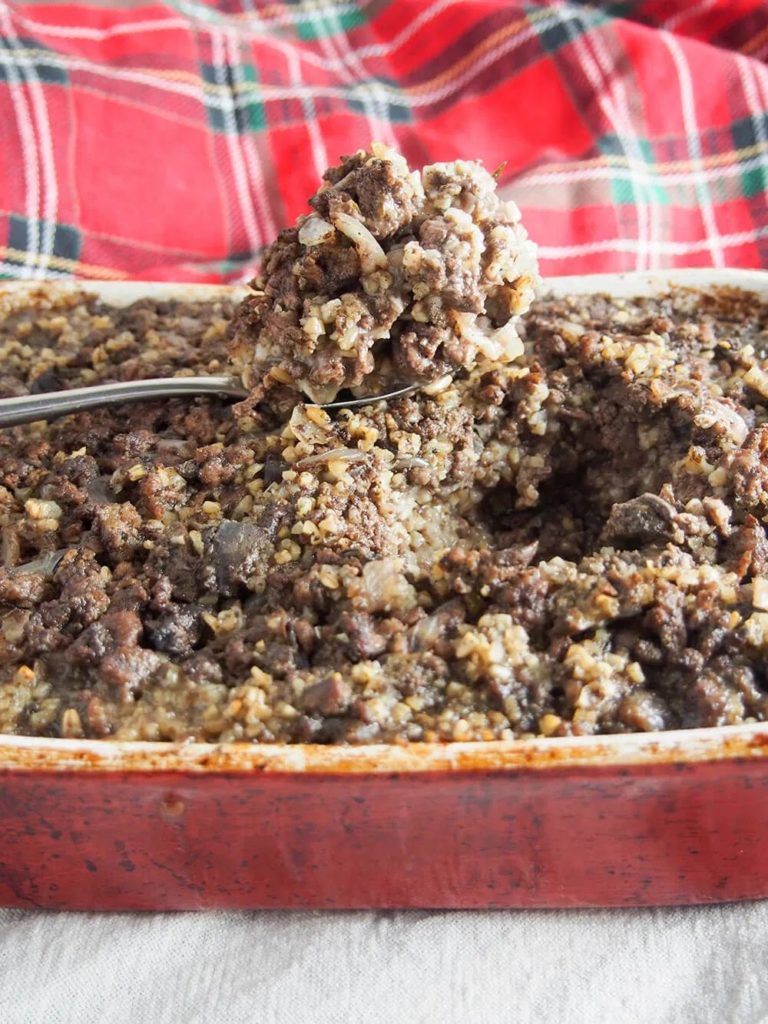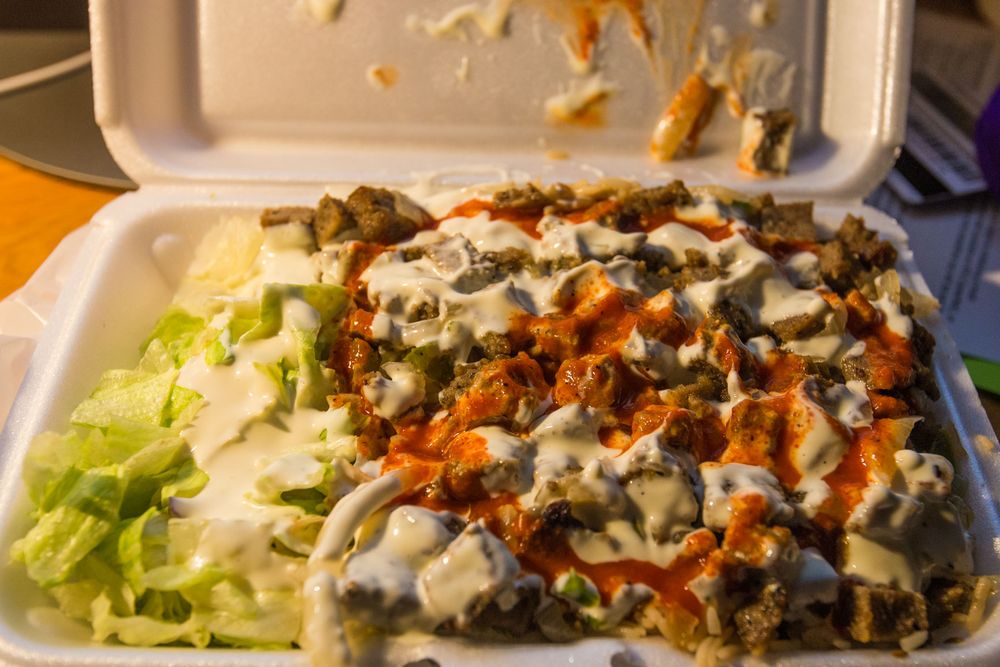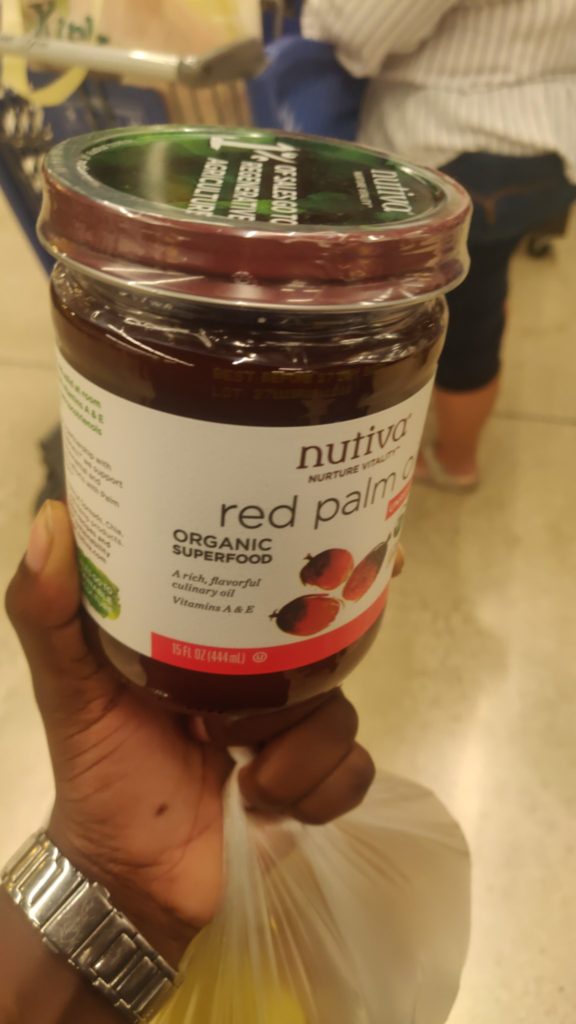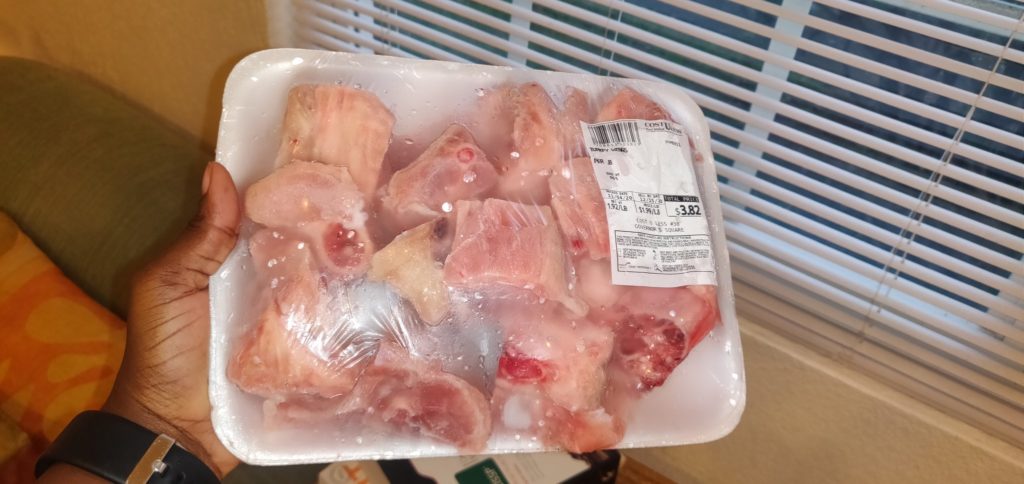How do Nigerians cope with the food abroad? That’s a question I have always been curious about. In this post, 9 Nigerians across Kenya, North Cyprus, Kenya, America, England, Ghana share their struggles with the food over there.
1. Jimi
The first thing you should know about North Cyprus is that there are African restaurants, but they sell at ridiculous prices. It’s like they’re trying to make a living off people that can afford them. If you decide to make traditional food yourself, the price of the raw food items will scare you into common sense. Fish and meat are expensive, the only cheap and affordable thing is chicken.

Over here, they don’t have Nigerian rodo but all these long green pepper that only aspire to be like our red pepper even though they could never. I had to bring my own grounded pepper from Nigeria. The vegetables are so similar that you have to be very careful before you cook something you don’t know. It’s not like in Nigeria where we have ugu, soko, and the other popular ones. Garri and palm oil is expensive. Too expensive, and it’s annoying because the palm oil doesn’t even taste or look like palm oil.
An advice I would give is this: When you’re buying foodstuff in their local supermarket, shine your eye and check every label before you buy something that looks like packaged raw beans but isn’t raw beans. That was how I saw a picture of oats on a package and bought it. Premium tears when I finished cooking it. I had to pour plenty milk and sugar to compensate for whatever it was I was eating. Anything you do, stock up on rice, bread, spaghetti and noodles. Rinse and repeat. It’s the only way to go.
2. Folasewa
I and three friends travelled to Kenya for an exchange program at Kenyatta University. We had to board two flights with one long stop at Rwanda, a short one at Uganda and the last stop at Kenya, so you can imagine how tired we were when we reached Kenya. We had been flying for 10hrs! Even after we passed through immigration and were transported to the university, we still had a long way to go before being settled into the hostel. While we were waiting for the school officials to allocate a room to us, we decided to branch at one of the ‘fancy’ restaurants on campus. Mugumo restaurant is what it is called. When we got there, we ordered the most basic thing, rice and beef stew. Something we wouldn’t regret buying.

The first thing we noticed was that the stew was really watery. The guy among us took a spoon and his face contorted. It looked like he had just taken something bitter. And the next person took bite and even before I tasted it, I began to regret why I the 150ksh (₦750 at the time) I spent on the meal. I cannot describe the taste of the food, but it was bad, really bad. Like they boiled water and put little tomato in it with meat. I began to regret coming to Kenya for the exchange programme. My major question was, “How can something as basic as rice and stew taste like this?”
Through out the 4-month stay, we only cooked Nigerian food. We even had our parents send down 90kg of Nigerian food. And most times, when we conversed with Kenyans, they always asked if we had tasted Ugali (an equivalent of tuwo according to a Nigerian there, but dry and hard). It seemed Ugali was their best food. A lady even asked me to persuade my brother to purchase a ticket to Nigeria for her so that she could marry him and cook ugali for him.
What I enjoyed the most was the Chapattis and pilau. Especially the Chapattis. I remember eating it with stew, with eggs, with sausages. It is such a versatile meal. And those were the only Kenyan meals I could eat. Oh and when I tasted their Jollof rice I cried because it felt like eating tin tomatoes straight from the can. I wasted money and took transport from the campus to ShopRite to buy Kenyan Jollof rice only to taste canned tin tomatoes. Never again.
3. Richard
So, I’ve been in Accra for a little over a year now and, by God, the food here is still a mystery to me. The first day I got here, I looked for a joint where I could get rice to eat. I bought it from a roadside seller and immediately regretted it after buying. I asked for rice and beans with stew because that seemed to be what I could manage. I was given rice and bean porridge with stew made with mostly tomato paste. I thought it was just the seller but others I tried had different weird tastes. I don’t know if it’s the cultural shock talking or it’s just what it is. I eventually started cooking my food myself after giving up on Ghanaian food.
This year, I decided to give Ghanaian food another go. I tried waakye and it tasted okay actually, well, except for the garri. Garri has no business in that meal but apparently that’s how it is eaten. Last month, my landlady asked me why I don’t eat Ghanaian food. I had to lie to her that I haven’t been able to get some. She offered to give me banku but I had to prepare the “sauce” myself. If I remember well, she said I’d mash tomatoes, garlic, ginger together in a clay pot they call Asanka and add little salt. I was waiting for when she’d say I’ll then fry or cook it or something. That never came. Apparently, you eat it that way with the Banku and sardines or boiled eggs if you’re in a good mood. I definitely ate the Banku but with some egusi I had in the fridge. No way in hell I was going to eat what she recommended.

And you know that thing about Ghanaians and eggs? Yes, it’s 100% true. Eggs are eaten as snacks here in fact. I randomly see sellers slicing eggs open and putting sliced onions and mashed tomatoes in it like some sort of burger. I’m not sure I’ll ever be into Ghanaian meals. My tummy is too fragile for all that.
4. Rotimi
The one thing that shocked me about the food culture in England was that if someone says, “Oh I’m inviting you to a restaurant for my birthday,” you have to first ask them if it is Dutch or if the host will be covering it,. Otherwise you will finish eating and then they’ll bring separate bills and ask you to pay your own money.
When I traveled, my mother offered to pack some Nigerian food for me to take along, but I refused because I wanted to enjoy Oyinbo food. I got tired of it really fast. There’s only so much Chinese takeout and McDonald’s you can eat before you start to crave Jollof rice or just white rice and stew.
The taste of British food was really underwhelming, if I’m being honest. Bland is the word I’d use. Even after the Brazilian or Asian restaurant put their flavour on it, we will still sprinkle small pepper on the food. Even with the bland taste, they are very stingy with food portions. They’ll serve you food and there will be space all over the plate.
The best food I’ve had in England has to be this full thanksgiving meal. It had lobster, Mac and cheese, corn bread, candied yams, mashed potatoes. And then there was the turkey and the greens.
The worst food I’ve had is Haggis. It has onions, oatmeal, sheep’s heart, liver and lungs. You can eat it with mashed potatoes. The taste is something. That’s the only decent way to put it. Let me not curse someone’s traditional food.

5. Oyin
I find two things strange in America. First is the restaurant culture of inviting people out and then making them pay. Americans will divide the bill, use calculator and ask you to send them money for your bill to their account if they use their card.
The second is the tipping culture. I’m a student, but here’s my friend forcing me to pay tip when we went out. She said she wanted to tip the waiter and I said, “Okay, do you.” But she wasn’t having it. She said I must tip the waiter too. I told her to tip and leave me out of it, but because we were in a group, they said it was only fair I tip too. Just like that, these girls made me pay $7 more. As per, they decided the tip percentage that I should PAY without asking me. I never went out with those people ever again. $7 is a whole meal in a food cart.

Here, the restaurants are nice and polite. If they mistakenly mix up your order, they’ll replace it for free, and you won’t have to pay for the change. But when it comes to food, they don’t understand how to use pepper. Every time I ask for EXTRA SPICY, it does not even touch half of my taste buds. I carry my own suya pepper from Nigeria.
These people live and breathe cheese. Don’t get me wrong, I like cheese. I just hate that they cannot think beyond it. Come on, WHAT ABOUT ATA RODO?? TRY THAT NAUU. Once, I went to this chic fil a to get the spicy chicken sandwich everyone was raving about. It was good but it had the exact spiciness level as a Mr. Biggs regular chicken. It was good because it was the best they ever had. But that level of pepper is normal to Nigerians.
I eat Algerian and Indian food because they are the ones that can get spice right like us. Also, it helps me keep my diet in check. I live mainly on fruits, vegetables and Indian food.
The price of regular food is shocking. One pack of Indomie is 40-42 dollars. One packet is 1.2 dollars. Wahala. I brought my own Indomie from Nigeria.
The best thing I’ve had here is chicken over rice for halal. It’s affordable and spicy. It’s like yellow rice. Some kind of curry makes it yellow, then diced chicken with diced lamb and some secret sauce. I don’t know what they put in the sauce, I just eat it. My worst food so far has to be buffalo wings. I hate the sauce. It Ruins perfectly good chicken.
If I am to rate the food, pure American food will get a 4. Food of other nationalities, 9.

6. Hakeem
When I traveled to the US, I didn’t pack any food item. And even after I got there, it took me a while before I went to the African store. I didn’t have Maggi/Knorr for sometime, and the bunch of seasonings I could get tasted off. When I eventually went to the store some months later, I just bought everything I could afford. When I want home food, I buy egusi, beans (which I can’t find in regular supermarkets. The types they have are the soy/black eyed ones/white ones. All generally smaller than the ones in Nigeria), Turkey, rodo, dry pepper, bitter leaf, okro. I also buy milk and Titus sardines, garri, plantains, yams, semo, etc.
I mostly eat the same things I ate back home with slight differences/substitutes. I eat more broccoli, drier salads (in place of coleslaw), lots of cheese. I haven’t eaten African food in restaurants in America. I’m the one cooking so it mostly tastes the same. I’m not sure how to qualify. The only variable would be the raw materials. For example, I bought Turkey at this store, and the Turkey skin seemed dried and thick. It was frozen so I did not know how it was when I bought it.
As for fruits, most bananas in America taste exactly the same and are almost always without spots. The watermelon too. There is little variation in the taste. There are no seeds in the oranges.
8. Dayo
When I was coming to the US, I took a lot of kuli-kuli, egusi, garri, ground pepper. I took a lot of curry too, the specific kind we use in Nigeria, pepper soup spices, and Maggi which is a weird but valuable thing to bring along. Some of it finished quickly. Some of it I’m still eating now. Egusi in the former, crayfish in the latter.
It’s hard to pick a favourite dish. I rarely eat as leisure, so it’s not very often that I pay attention to the pleasurable part of food. There’s a Chinese restaurant close to me that is now closed that I loved almost everything on their menu. There was also a trip to another city I did with friends where every food we tried was a hit. Worst thing is probably a loose burger I bought at a place where I’ll never eat again. It was too expensive for the misery it put me through.
9. Sarah
When I moved to the Cayman Islands in 2019, I took a box load of food stuff because there isn’t a single African store in the Cayman Islands. Besides, food is expensive on the Island because we import almost everything.
The box I carried contained everything from garri, poundo, crayfish, egusi, ogbono, iru, pepper soup spice, powedered maggi, pap etc. I even carried kilishi, but it was seized at the airport. They said something about meat products not allowed from other countries. I was so pained. I forgot the carton of Indomie, sardine and Golden Morn. But then I travelled in December 2019 and came back with a box load of more Nigerian foodstuff.
I am not picky with food so I can adapt to anything. I also share some of my ingredients with other Nigerians on the Islands.
Here’s a picture of the palm oil I bought over there for $12. It doesn’t taste like Nigerian palm oil and it’s not as red.

Finding white yam is a struggle. I have had to manage yellow yam which is different from the white yam. After spending more than one year on the island, I finally found a store with white yam.
Interestingly, the white yam is cheaper (about USD $3.59 per lb) but the yellow yam is bitter (about USD $5.99 per lb). I have to soak the yellow yam in salt/sugar brine so I can manage it. Other Nigerians I have spoken to didn’t like it at all. By the way, it’s not the full tuber of yam that cost that much. It’s just pieces of the yam. When you go, there is a yam cutting board with a knife. You can cut a portion of the yam you want and then weigh it. You’ll hardly see a full tuber of yam in the supermarket. Plantain is relatively cheap here. It costs USD $1.79 per lb. And no, you don’t have to cut it in pieces.
Caribbean food isn’t bad at all. It’s quite similar to the Jamaican dishes. Their traditional food is mainly seafood, since it’s an island. They also have Cayman style beef which is really nice, and you can also try turtle meat.
It’s really hard to pick my best dish here. But I can easily tell you my worst: Ackee and saltfish. It’s a Jamaican dish that is popular here. That thing is nasty. It looks like egg sauce for Sunday yam. But its a no for me.
In terms of how available and accessible it is over here, I’ll rate Nigerian food a 4. And that’s just because of the palm oil, yam, plantain, goat meat and dried fish. The cost is bloody expensive though. For their own food here, I’ll rate it an obvious 10, in terms of availability and accessibility. The cost? Moderate. That’s it for me.

Here’s something else you’ll enjoy




